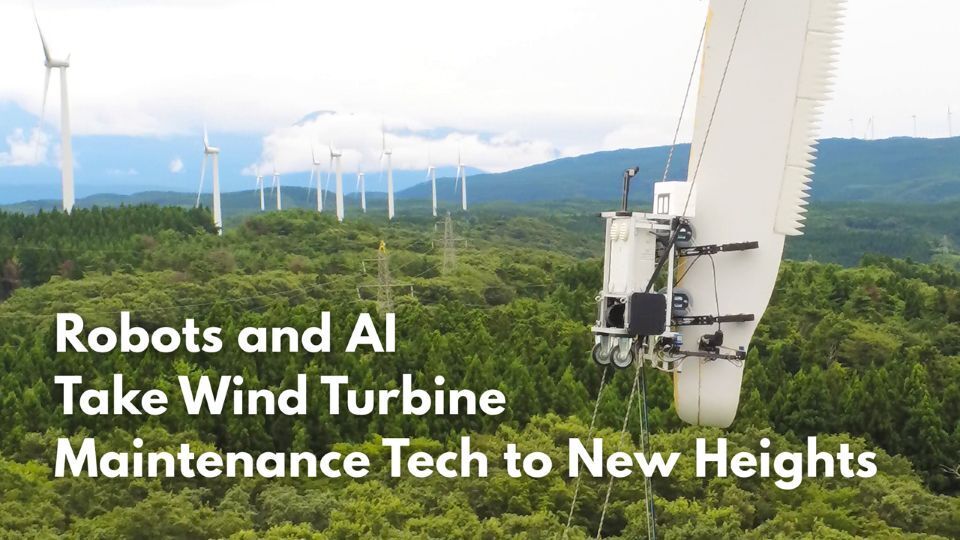As interest in renewable energy grows, a sustainable mobility solution born on a tiny Japanese island is making its way overseas. The Republic of Palau, a Pacific nation threatened by rising sea levels, plans to adopt the Green Hub system first deployed on Himeshima in Oita Prefecture. Here’s a closer look at how the “Himeshima model” could solve local transportation problems while cutting emissions on islands around the world.
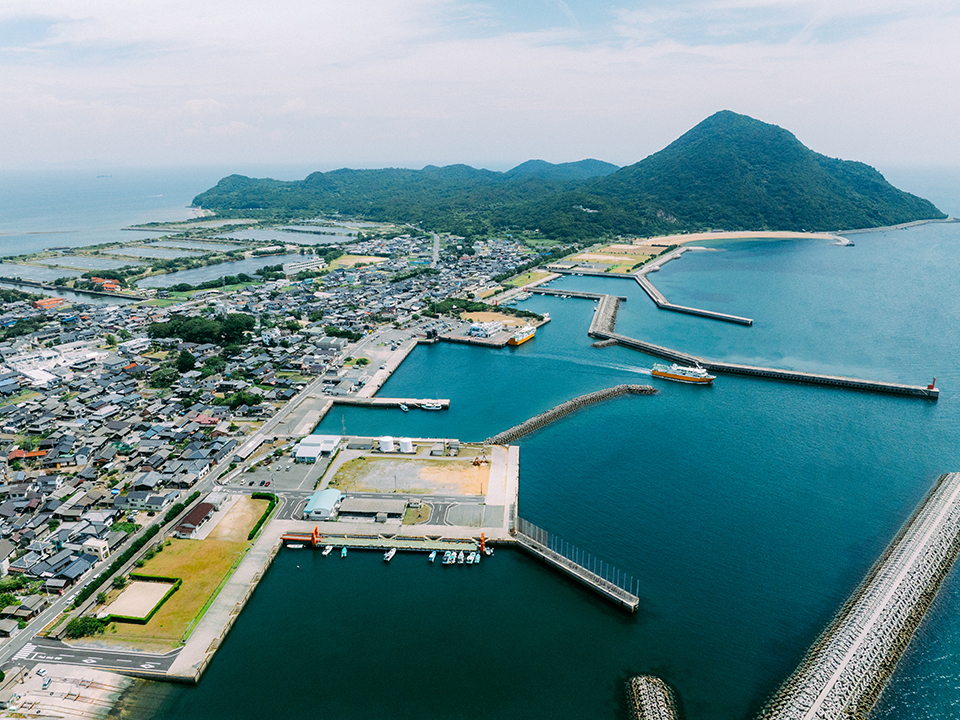
The village and port of Himeshima
At the heart of the system are “Green Hubs”—EV charging stations equipped with rooftop solar panels that generate the energy used to charge batteries. The system was developed by T-PLAN Inc., a technology consulting company in Nakatsu, Oita. T-PLAN’s Himeshima-born CEO, TERASHITA Mitsuru, began work on the Green Hub idea out of a desire to make his home island a more environmentally friendly place.
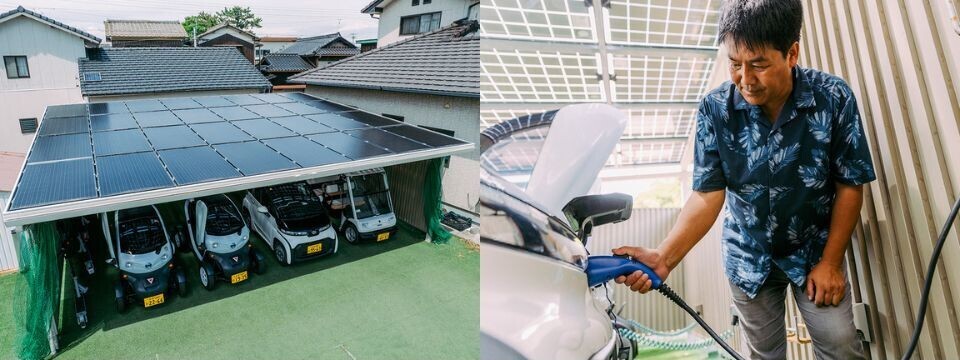
This Green Hub with rooftop solar panels can charge four EVs at once.

The village and port of Himeshima
At the heart of the system are “Green Hubs”—EV charging stations equipped with rooftop solar panels that generate the energy used to charge batteries. The system was developed by T-PLAN Inc., a technology consulting company in Nakatsu, Oita. T-PLAN’s Himeshima-born CEO, TERASHITA Mitsuru, began work on the Green Hub idea out of a desire to make his home island a more environmentally friendly place.
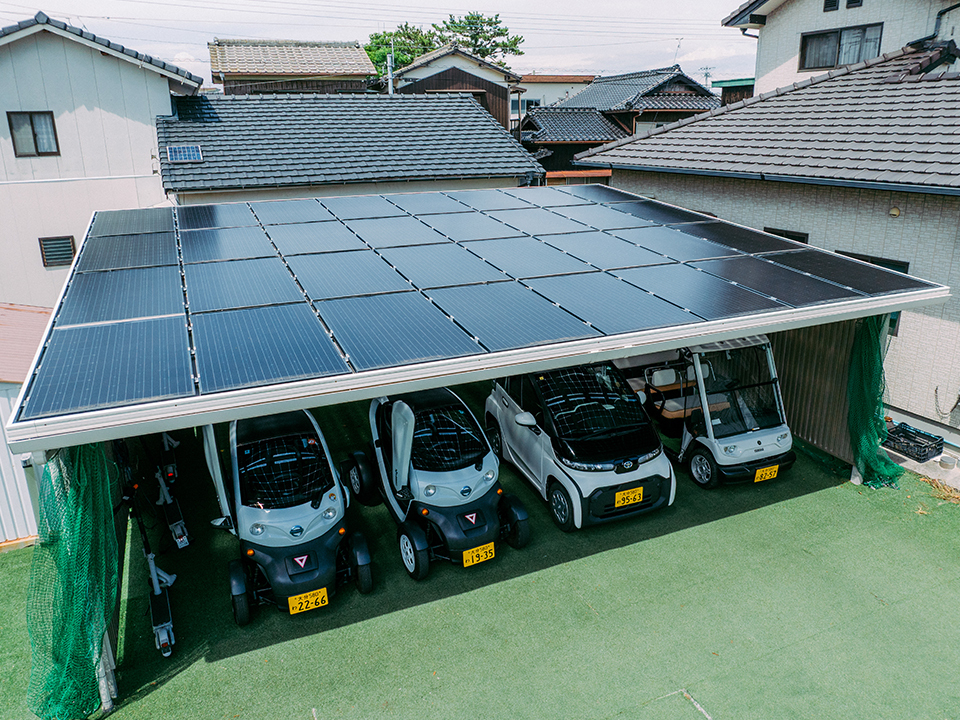
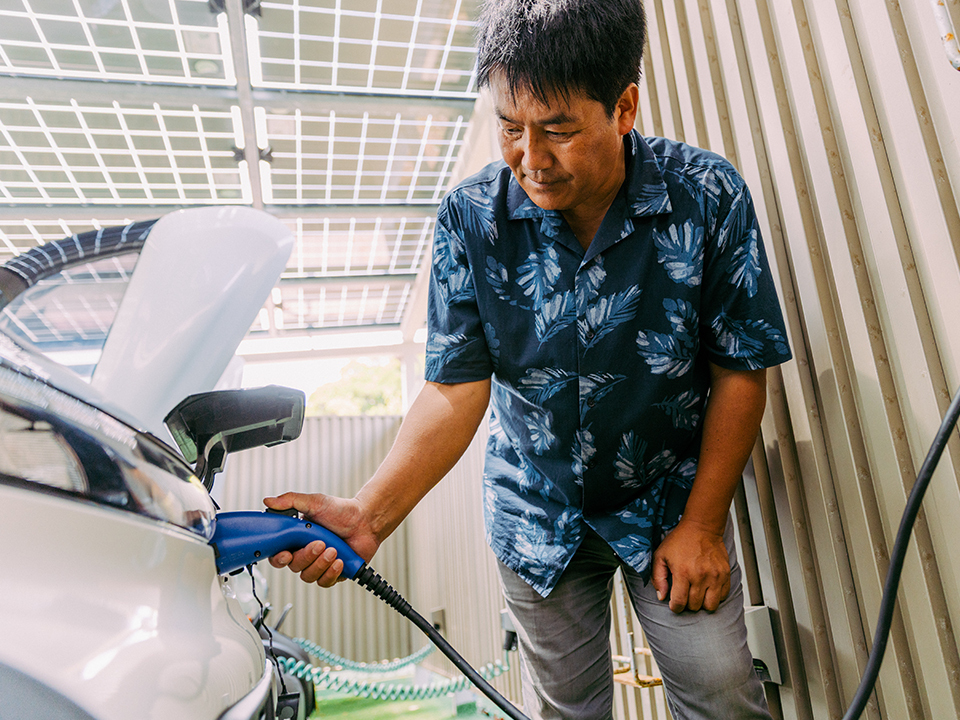
This Green Hub with rooftop solar panels can charge four EVs at once.
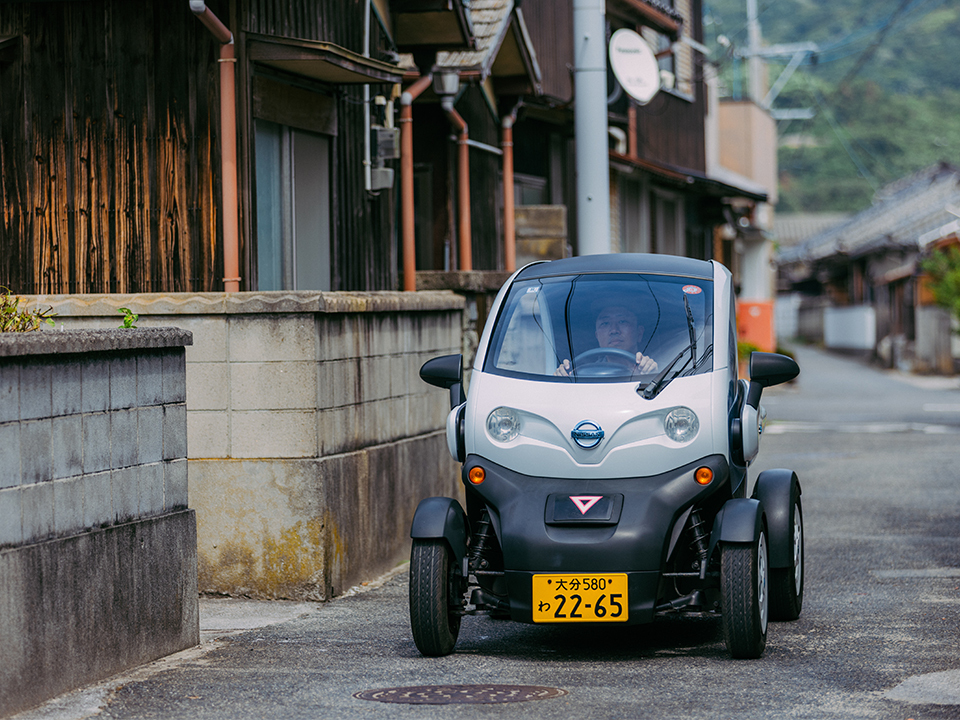
The EVs are small enough to zip smoothly down the island’s narrow roads.
Before these Green Hubs were built, Himeshima faced a major problem. Minimal public transportation limited the mobility options of residents, and older islanders in particular had difficulty visiting medical facilities and municipal offices.
In 2012, T-PLAN began working with Nippon Bunri University, in Oita Prefecture, on a project to resolve this issue. The team gathered information about different types of EVs, studying the relationship between distance traveled and the amount of charge and charging time required, as well as requirements for battery capacity and electricity generated. Development proceeded through a process of trial and error.
Finally, in 2018, T-PLAN implemented the Green Hub concept through an EV rental business it was already operating on Himeshima. Now in its eighth year, the program has reportedly prevented a total of 24.6 metric tons of CO2 emissions.
Before these Green Hubs were built, Himeshima faced a major problem. Minimal public transportation limited the mobility options of residents, and older islanders in particular had difficulty visiting medical facilities and municipal offices.
In 2012, T-PLAN began working with Nippon Bunri University, in Oita Prefecture, on a project to resolve this issue. The team gathered information about different types of EVs, studying the relationship between distance traveled and the amount of charge and charging time required, as well as requirements for battery capacity and electricity generated. Development proceeded through a process of trial and error.
Finally, in 2018, T-PLAN implemented the Green Hub concept through an EV rental business it was already operating on Himeshima. Now in its eighth year, the program has reportedly prevented a total of 24.6 metric tons of CO2 emissions.

The EVs are small enough to zip smoothly down the island’s narrow roads.
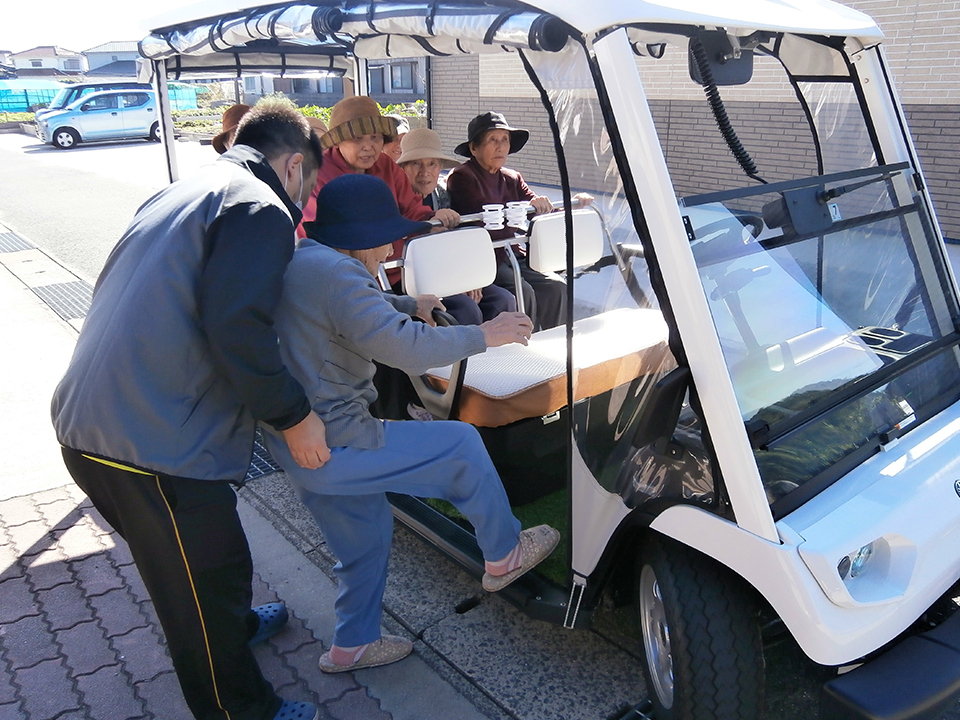
Older passengers board an electric golf cart charged at a Green Hub.
A wide range of vehicles is available, including one- and two-seater EVs, four- and seven-seater electric golf carts, and even electric bicycles and kickboards. Tourists are the chief target market, but the vehicles are also used to transport older residents without cars.
“We have one initiative where we drive people to medical facilities, then take them home again. For example, if their dialysis procedure takes four hours, the hospital will contact us in four hours to come and pick the patient up,” says Terashita. “There are few buses and no taxis on Himeshima, so everyone is delighted that we’re able to help older residents get around. EVs are also available for loan to people whose personal cars are unavailable due to accidents or maintenance, and old EVs are sold used to islanders. We are currently working on an initiative toward a future in which every car on the island will be a shared eco-car.”
A wide range of vehicles is available, including one- and two-seater EVs, four- and seven-seater electric golf carts, and even electric bicycles and kickboards. Tourists are the chief target market, but the vehicles are also used to transport older residents without cars.
“We have one initiative where we drive people to medical facilities, then take them home again. For example, if their dialysis procedure takes four hours, the hospital will contact us in four hours to come and pick the patient up,” says Terashita. “There are few buses and no taxis on Himeshima, so everyone is delighted that we’re able to help older residents get around. EVs are also available for loan to people whose personal cars are unavailable due to accidents or maintenance, and old EVs are sold used to islanders. We are currently working on an initiative toward a future in which every car on the island will be a shared eco-car.”

Older passengers board an electric golf cart charged at a Green Hub.
EVs are relatively quiet and not too fast, which appeals to tourists hoping to explore the island at a relaxed, leisurely pace. “Tourists call out to each other on the road and interact with the islanders,” says Terashita with a laugh. The same system is currently being introduced in Nagasaki, Kochi, and Kagoshima prefectures as well, particularly on outlying islands like Himeshima.
Also looking closely at Himeshima’s success is the Republic of Palau, an island nation in the Pacific. When Palau’s ambassador to Japan heard a speech delivered by Terashita at a university in Tokyo in 2020, he reached out to explore the possibility of implementing the system in Palau as well.
Palau currently relies on imported diesel fuel for energy generation, spending 13% of its GDP on fuel imports. Like Himeshima, its public transportation system lacks sufficient coverage, so a high proportion of citizens travel by private car. As a result, rising fuel costs have a serious impact on daily life for Palauans. The country also faces complex and challenging issues such as rising sea levels due to global warming. As part of addressing these problems, Palau has set itself the objective of becoming 100% powered by domestic renewable energy by 2032.
After discussions with the Palauan ambassador, T-PLAN set about deploying, testing, and commercializing the Green Hub system as an international cooperation enterprise under the auspices of the Japan International Cooperation Agency. Commercialization surveys were completed in 2023, and in 2025 the project began implementation in earnest. After studying on-site conditions in Palau in late February 2025, T-PLAN invited Palauan engineers to Japan for technical training that July, with plans to launch full-fledged operations by October. Hopes are high that the system will take root throughout the country as a service accessible to both tourists and residents.
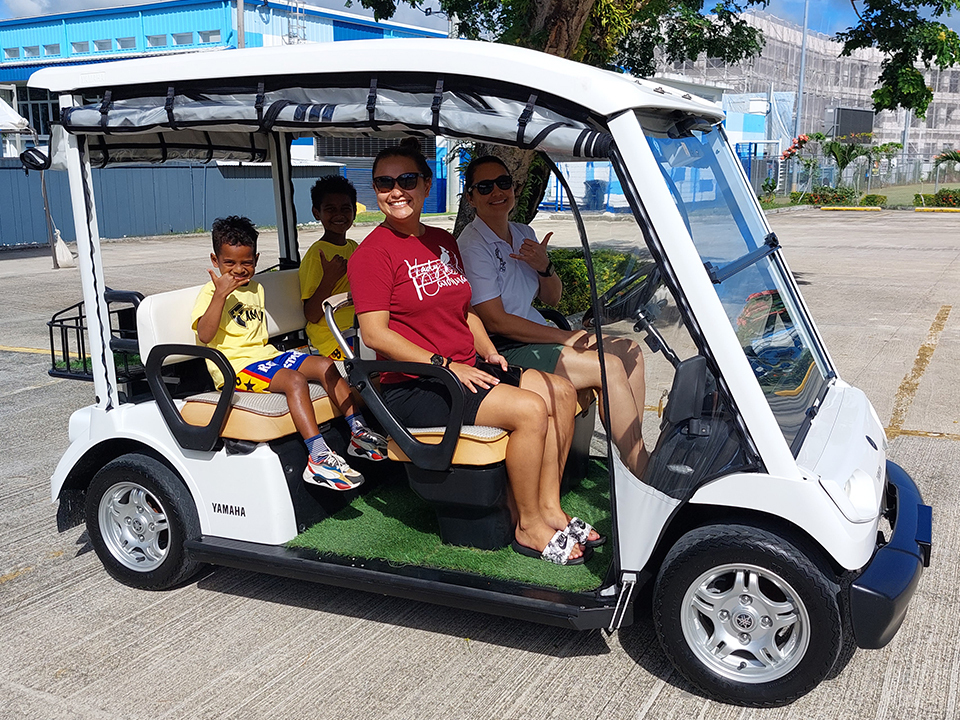
Tourism is a key industry for Palau, which is richly endowed with beautiful seas and islands. As a national policy, the government promotes sustainable tourism mindful of these precious natural resources.
Terashita is already thinking about the next steps. “I hope to share the ‘Himeshima model,’ combining Green Hubs and EVs to reduce CO2 emissions to zero, with other Pacific island nations facing the same challenges as Himeshima and Palau,” he says.
With markets too small to attract large companies, Himeshima and Palau are precisely the kinds of places that need solutions like this. Born and raised on a tiny Japanese island, Green Hub technology looks set to play a role in solving world-scale problems.
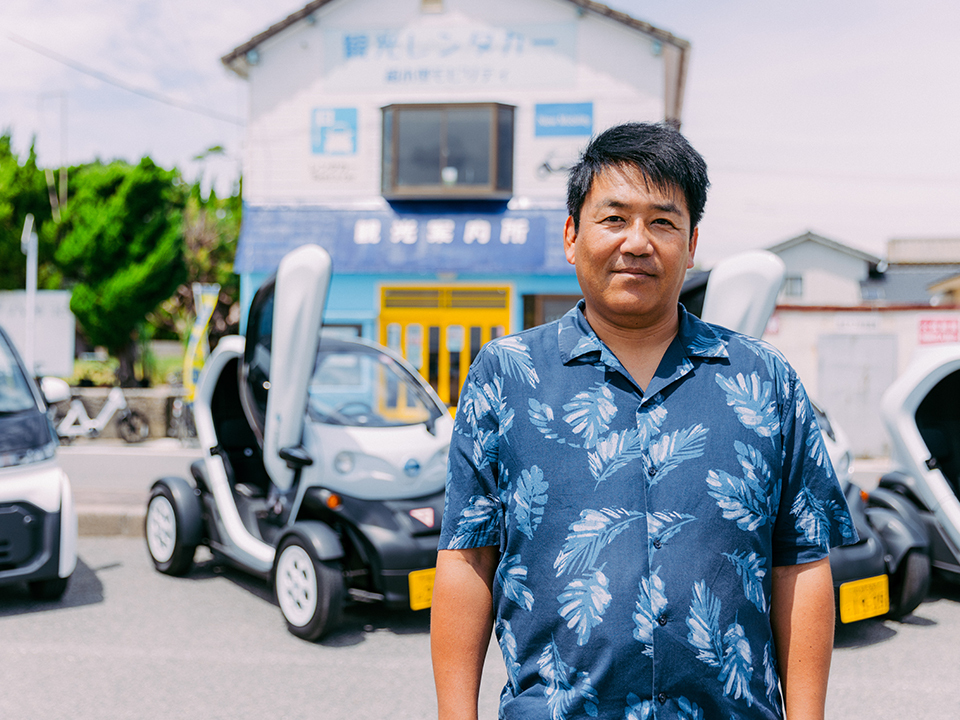
TERASHITA Mitsuru, CEO of T-PLAN Inc.





























